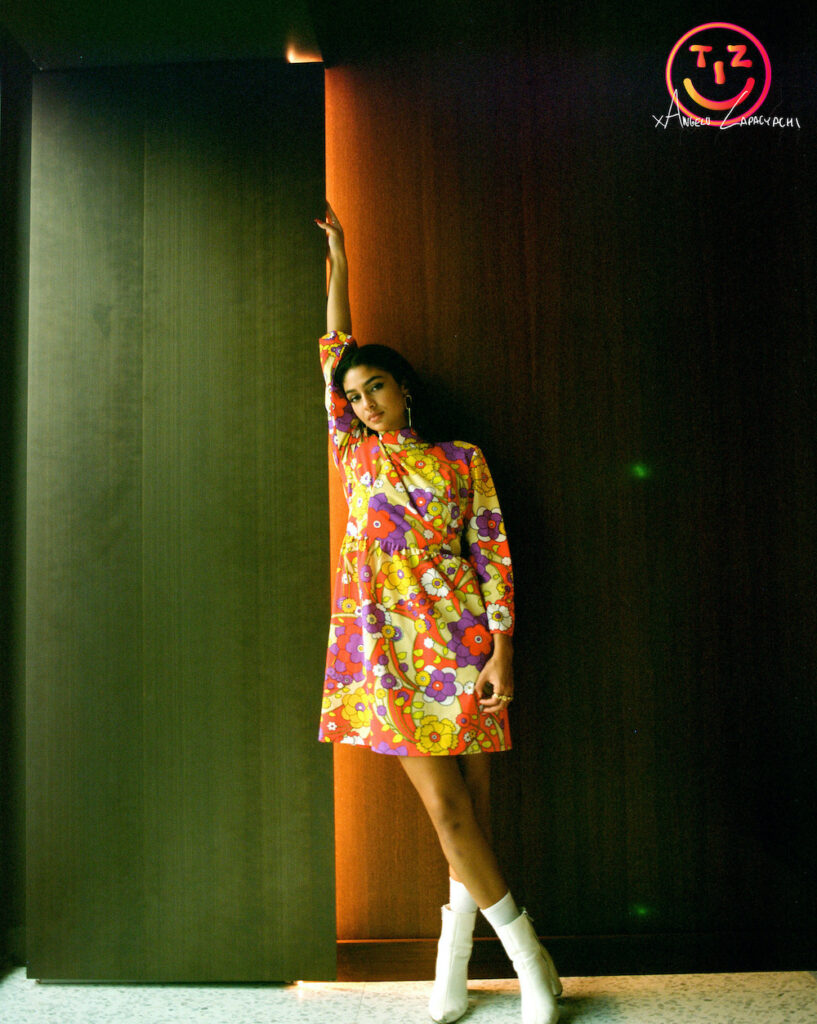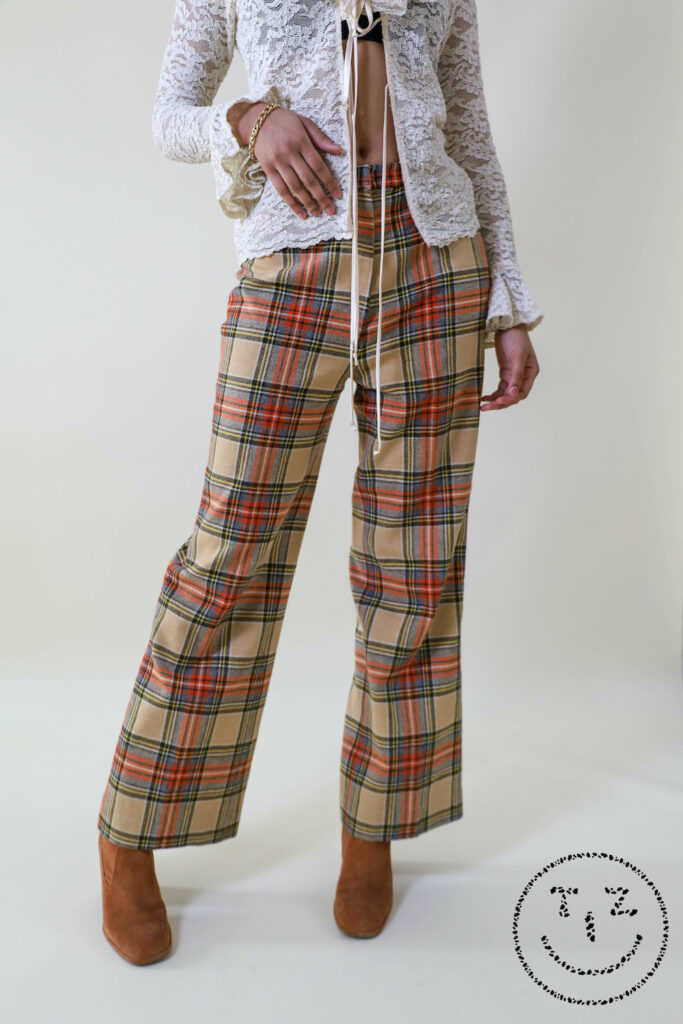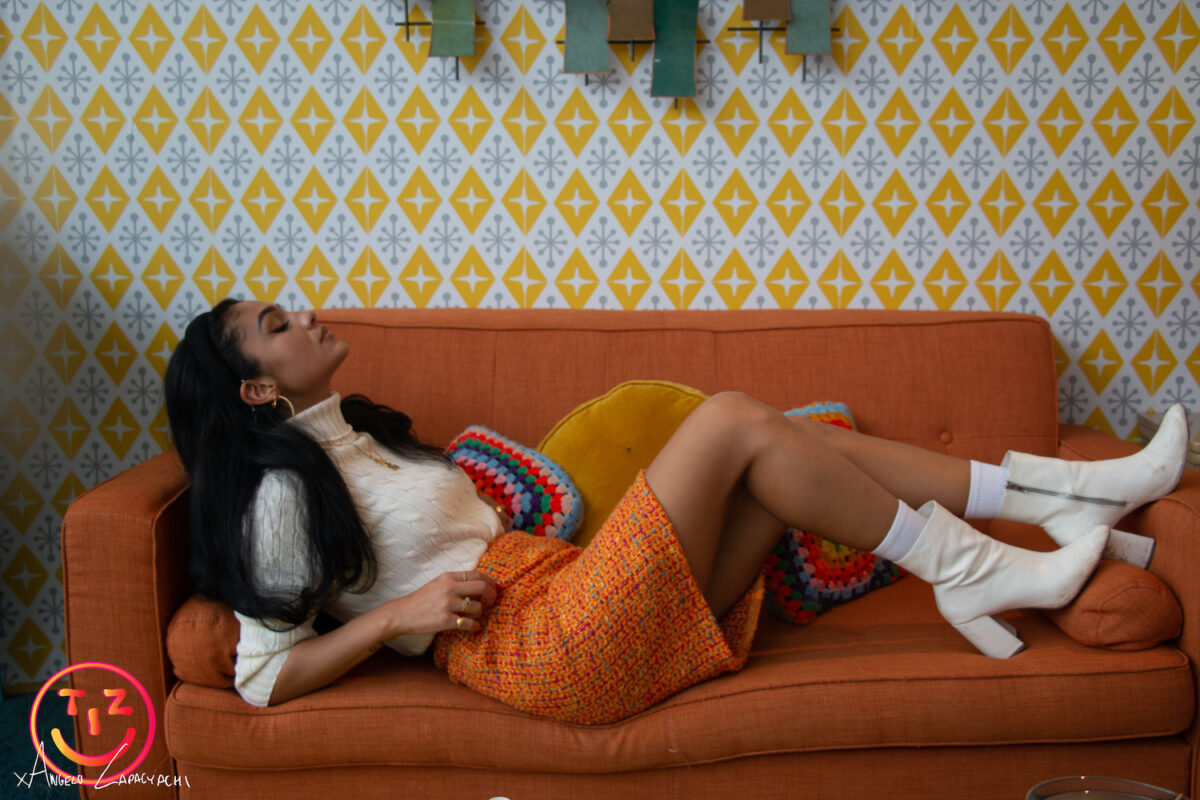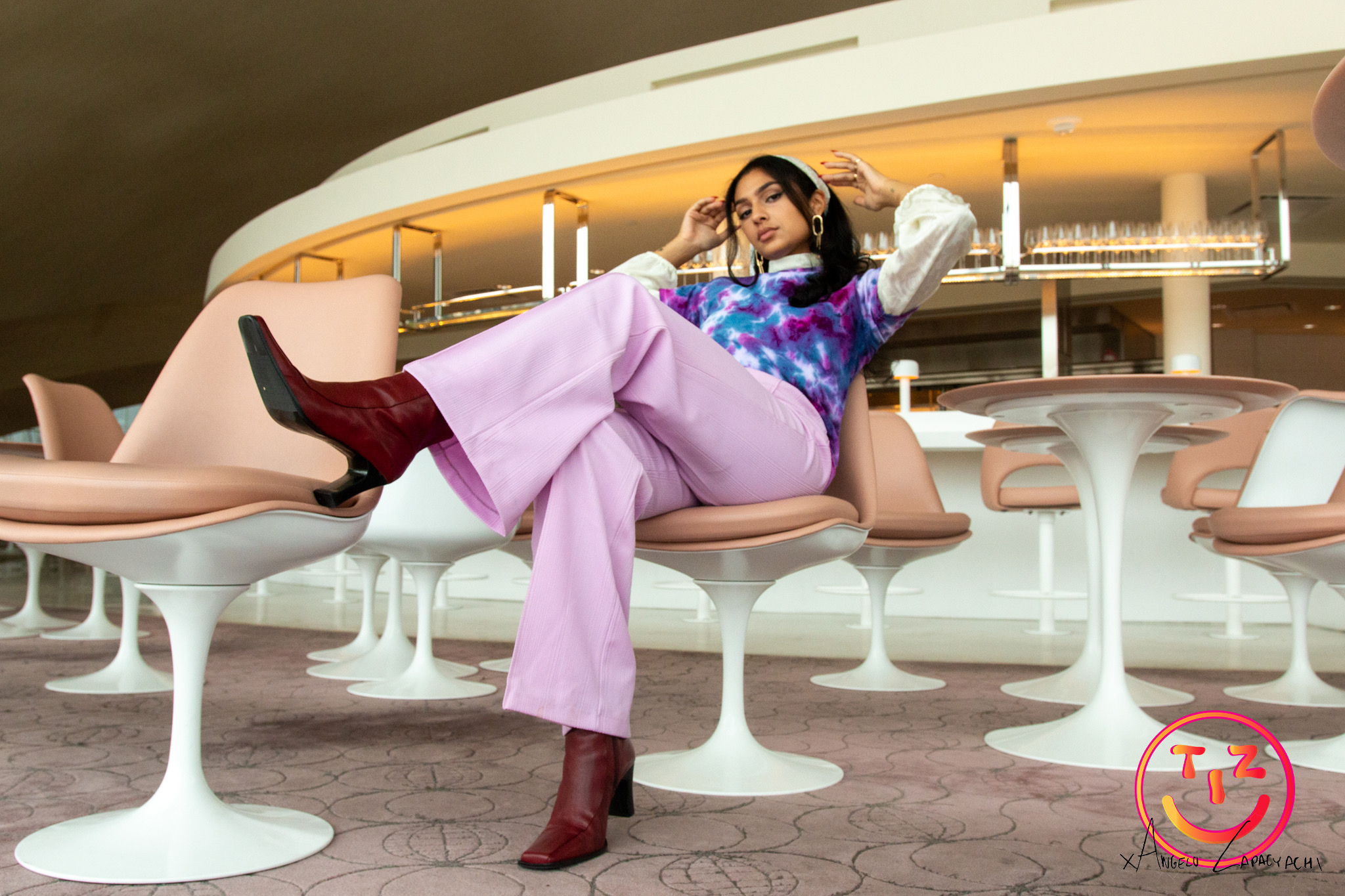Correction: In the caption for the featured image, the photograph credit was given to Angelo Capacyachi. The photograph credit goes to Alexandra McDowell.
A new vintage clothing brand started by a Parsons student is giving new life to old garments and encouraging customers to think sustainably and ethically while thrifting.
Tiz the Label was created by Tiziana Torres-Zollo from the basement of her parents home in Long Island this summer, amidst a global pandemic. Wearing gloves and a mask, Torres-Zollo dug through storage bins and racks of clothes on the hunt for vintage clothing, home decor, jewelry and accessories.
“I like being able to fix what’s already made,” said Torres-Zollo, 20, who scours flea markets, estate sales and family-owned thrift stores in order to avoid contributing to the gentrification and the wasteful nature of the fashion industry.
Tiz the Label launched its first drop in September, which included 1960’s headscarves and leather jackets, orange tinted wine glasses and metallic beaded purses — all hand-picked in New York state. Since then, the company has had two more drops, featuring vintage ashtrays, colorful blazers from the 1990’s, and patterned button-up blouses.
When Torres-Zollo searches for her products, she shops as if she were shopping for herself and her friends, looking for fun and unique designs that are also in good condition. “I try and make sure that everything that I’m choosing is constructed well, and it’s high quality,” Torres-Zollo said. “If it’s not in good condition, I take it, fix it myself, take it to a tailor or the dry cleaners.”
Torres-Zollo took pre-college courses at the Fashion Institute of Technology in high school and realized that she wanted to take her career in the direction of being a stylist or creative director. After working a slew of retail jobs at stores like Free People, Anthropology and Club Monaco, Torres-Zollo said she was motivated to stop working “under people” and to work for herself, later forming her own brand.
Torres-Zollo hopes to encourage her customers to have fun with her clothes and branch outside of their typical style and fast-fashion trends. “Clothing is an expression and honestly, when I’ve worn the weirdest stuff that’s when I’ve felt the most myself,” Torres-Zollo wrote in Tiz the Label’s ‘About Me’ page.
Maia Fernandez, an old high school acquaintance of Torres-Zollo, picked up a blue Victorian-era style prom dress from the 1980’s to wear for Halloween and a plaid skirt and blazer set from Tiz the Label.
“I was looking for something that was really outrageous or something that was like, really wild because I have been trying to dress more, I don’t know, eccentric,” said Fernandez. “For my own happiness.”
‘Don’t be a dick. Thrift responsibly.’

When she isn’t at flea markets or estate sales, Torres-Zollo finds clothing through private vintage collectors or from her relatives. She entirely avoids buying from thrift stores all together, like Salvation Army, Savers and Goodwill, which sell affordable clothing and home items that underprivileged communities depend on. When she does go to a thrift store, she is transparent about it with the customer and only visits family-owned or cash-only shops, where she knows who her dollar goes to and directly benefits.
“Don’t be a dick. Thrift responsibly,” Torres-Zollo wrote to her followers in an Instagram story about the ethics of her brand and second-hand shopping, a topic she has studied extensively.
“Being a strategic design management major, I have to recognize every single system that my company could be helping or hurting,” she said.
Over time, Torres-Zollo said she has witnessed a “dramatic rise” in prices as thrifting has become more trendy. Consumers are drawn to second-hand not only because it offers the opportunity to find one-of-a-kind garments, but mostly because the items are being sold at lower price points than if it was purchased new.
“If I were to just go to Goodwill and get a beautiful fur coat for like ten bucks and then sell it to someone for $50, I’m just gonna feel bad about myself because that coat could have been something really nice for someone who doesn’t make that much money,” said Torres-Zollo.
She also intentionally stayed away from using online reseller sites like Depop, Poshmark, or thredUP –– which are considered to be cheaper and more environmentally conscious places to buy clothing, than fast fashion brands such as Urban Outfitters, Forever 21, or Fashion Nova. But, these sites are also known for their sellers over-inflating the prices of items, like this sweatshirt which was sold by brandy Melville for around $30 to $40 and was auctioned off and sold for £360 — or about $480.
“What really bothered me about Depop and a lot of these sellers was I knew they were going to places like Goodwill and just buying whatever they wanted and then marking up the price. And that’s just capitalism at its finest,” Torres-Zollo said.
Eco-Conscious Consumption

The fashion industry is considered to be the second most polluting industry in the world by the United Nations Conference on Trade and Development. Additionally, 87 percent of all fiber used for clothes ends up incinerated or in landfills, according to the United Nations Environment Program, which pollutes the air and waterways, disrupts ecosystems and adds to the growing pile of waste created by humans. Secondhand shopping is proven to slow the clothing to landfill pipeline responsible for these statistics.
“By shopping second-hand, you are automatically reducing your carbon footprint,” Torres-Zollo wrote on her website. Globally the fashion industry is responsible for 10 percent of all annual carbon emissions, and The UNEP estimates that by 2030, the fashion industry’s greenhouse gas emissions will increase by 50 percent.
While individual emissions are microscopic compared to emissions from major industries, choosing to spend your money on second-hand clothing allows consumers to stop textiles from ending up in landfills and not support an industry which pollutes the environment.
“I just think it’s so much more fun when you’re wearing something old, automatically. It has a story, you seem cooler, it’s sustainable,” Torres-Zollo said.
Although Tiz the Label ships clothing, which still produces emissions from the transportation of the package, Mike Harrington, the assistant director of the Tishman Environment and Design Center, believes that because the clothes are already created, the impact of a small second-hand business like Tiz the Label is “not as bad” as the impacts of the global fashion industry.
“It may be easy for us to go online and buy something cheaply, but what is the real cost of that item in terms of workers, water, shipping, etc? It will be better for all of us to be more conscious of our choices,” Harrington said.








